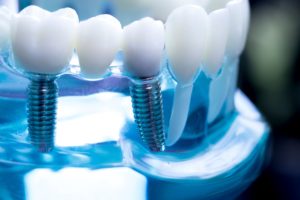
Today, dental implants are touted as the golden standard of tooth restoration. They have an incredibly high success rate and can last 20+ years with the right care making them a reliable, long-term solution. That said, dental implants have a long history and weren’t always as effective as they are in our current era. Keep reading to learn about their evolution, and why there’s no better time than now to move forward with treatment!
Ancient Materials
Did you know that ancient civilizations sought solutions to replace missing teeth? Their first stabs at it were somewhat rudimentary and dependent on the materials available at the time. For example, archeologists have found evidence dating back to 600 A.D. that in China, people carved bamboo pegs that they tried to insert into their jaws to use as false teeth.
Then, 2,000 years later, Egyptians tried a similar technique but used precious materials like ivory, jade, and even metal. In fact, the first recorded instance of a metal dental implant was for an Egyptian king from around 1,000 B.C.
Early Modern Updates
Dental implants didn’t advance beyond the initial attempts for quite a while because the materials used were rejected by the human body more frequently than not. As a result, around 1500 B.C., researchers began experimenting with new methods they hoped might last. In the 18th century, they tried using a gold alloy. These early efforts failed, so then in the 1800s they tried silver and porcelain, too. Despite the updates to their techniques, they still couldn’t find a substance that would fuse with human bone when inserted.
Modern Developments
In the early 1900s, doctors finally made progress when two brothers (Drs. Alvin and Moses Strock) tried something new. They tried using Vitallium, which was utilized in hip bone surgeries at the time. This solution was much more long-lasting and is generally recognized as the first victorious dental implant.
Then, in 1952, Dr. Per-Ingvar Branemark was studying bone regeneration after placing titanium into the femur of a rabbit. When he went to remove the metal, he found that it had integrated fully with the bone and couldn’t be separated. This fortuitous discovery was first applied to dental implant patients in 1965.
Current Concepts
Recent advancements in tools and technology have greatly improved the dental implant process. Now, patients benefit from robot-assisted surgeries, 3D printing, and updated materials that eliminate bacterial biofilms. As a result, dental implants today have a 95% success rate and are less likely to develop infection or other complications.
Now that dental implants look and function more like natural teeth than any other tooth restorations, there’s no better time to call the dentist and start your journey to refurbish your smile!
About the Author
Dr. Kathy Lam takes pride in providing a wide range of dental services with a focus on comfort, precision, and individualization. She attended the University of Illinois at Chicago for her bachelor’s degree and then completed her Doctor of Dental Surgery at Howard University College of Dentistry. She knows technology is always growing and changing, so she attends ongoing educational courses to be able to offer the most effective treatments using advanced instruments. You’re welcome to request a consultation on the website or by calling (630) 653-7720.
